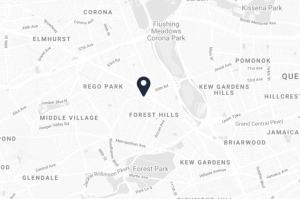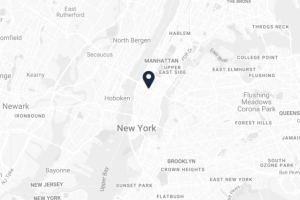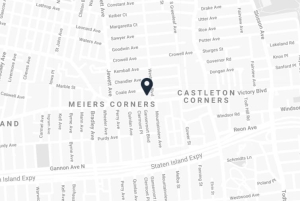Common Surgeries for Broken Bones in a Queens Car Accident
COMMON SURGERIES FOR BROKEN BONES IN A QUEENS CAR ACCIDENT
| May 18, 2020 | Car Accidents, Injuries, Motor Vehicle Accidents, Personal Injury |
UNDERSTANDING THE SURGERIES FOR BROKEN BONES IN A QUEENS CAR ACCIDENT: MOST COMMON SURGERIES EXPLAINED
One of the most common types of personal injuries in a Queens car accident is a broken bone. This type of injury can be incredibly painful, especially if it is a large bone or a fracture at a joint. Some types of broken bones can also be incredibly debilitating, especially a hip, pelvis, or back/neck. While many victims with a broken bone may heal with just a cast or splint, some victims may require surgery to repair the damage done to the bone. Sometimes the surgery is a success, and other times a revision surgery is needed or a second surgery to remove painful hardware. Victims may be entitled to compensation under New York law for their injuries, including their surgeries.
Here at COHEN & COHEN PERSONAL INJURY LAWYERS, P.C. , our experienced Queens car accident lawyers make sure that victims receive their fair compensation if they have been injured due to the reckless, careless, or negligent actions of another person, business, or government entity. This includes surgeries for broken bones, which there are many common surgeries for broken bones that our experienced legal team can handle for victims and their families. Learn about these common surgeries for broken bones and if you or a loved one suffered any type of personal injury after a motor vehicle accident, please make sure to call for a FREE case evaluation to learn what your rights may be to compensation.
TYPES OF FRACTURES
Not every type of fracture needs surgery. Rather, there are many different types of broken bones which may not require intervention other than a cast and pain medication. However, some fractures are very severe and require extensive surgery. The most common types of fractures caused in a motor vehicle accident include the following:
- Non-displaced fracture – there is a broken bone but the ends of the bone are not out of place
- Compound fracture – the broken bone pierces through the skin
- Greenstick fracture – when the bone bends significant and breaks at the point of impact, usually in children who have more flexible bones
- Compression fracture – when the ends of the bone are compressed together, usually the vertebrae (back) but could also be a major bone in the leg or car in a heavy impact (head on)
- Transverse fracture – the broken bones has a horizontal fracture across it
- Oblique fracture – the broken bone has an angled fracture across it
- Comminuted fracture – when the broken bone shatters into many pieces, usually three or more
- Buckle fracture – broken bones when two bones are forced into each other due to an extreme force, and
- Many other types of fractures.
COMMON SURGERIES FOR BROKEN BONES IN NEW YORK
Each type of fracture needs to be treated differently. Some may require casting, some may require surgery. Others may require complete immobility. Some broken bones require rods inside of them, whereas others may require plates wrapped around them for support. Some may need a series of brackets and screws which help keep the bones together and in place. All of these types of surgeries can create immense pain and suffering for a victim which may be compensable under New York law.
The most common types of surgeries for bone bones after a Queens car accident include the following:
Ulna/radius repair – The ulna and radius are your lower arm bones which extend from your wrist to your elbow. They help rotate and turn the hand, wrist, and lower arm. They can become fractured at the wrist which usually requires surgical require because the bones tend to “float” or move away from each other. This means the ends need to be screwed together and held together with something known as a buttress pin. This looks like a cross between a paperclip and a Connector-set piece of metal which holes in it for the surgeon to place screws into it. This helps to keep the ends of the bones together which will allow them to properly fuse.
Tibia/Fibula repair – Like the ulna radius, the tibia and fibula are the lower leg bones between the ankle and the knee. They comprise the shin bone and help stabilize your leg and rotate your leg inwards and outwards. These bones can also be broken at the ankle, especially if caught under a dashboard. The fibula is most likely to break because it has a small piece that extends along the outside of your ankle. This means the tip can actually be broken off if there is force in one direction or the other against the ankle. Usually pins are needed to help the fibula in the proper position while it heals, which usually means that the pins need to come out afterwards.
Orbital blowout fracture – The orbit is the bone that makes the socket around your eye. This is a pretty sturdy bone, but it lacks support behind it. Meaning that a direct and forceful impact to it may cause it to collapse backwards in the skull. This means that it can collapse the sinuses, especially when the orbital floor (a bone under the eye) also fractures; this bone is much weaker. When this occurs, the eye can actually descend into the sinus. This requires a very extensive repair which must rebuild the orbital floor (usually with a plate) and then restructure the orbit. The eye must also be carefully handled to not damage the optical nerve. This type of surgery usually requires revisions and is very painful, debilitating, and results in a long recovery.
DID YOU SUFFER A BROKEN BONE IN A QUEENS CAR ACCIDENT? CALL OUR LAW FIRM
Broken bones may be one of the most common injuries in a motor vehicle accident, but that does not mean that they are less important or run-of-the-mill. To the contrary, broken bones can be particularly debilitating and disabling—especially if surgery is required to repair the damage done to the bone or joint. This is why victims needs to retain an experienced Queens car accident lawyer such as those at COHEN & COHEN PERSONAL INJURY LAWYERS, P.C. If you or a loved one were seriously injured in a motor vehicle accident, please call to learn what your rights are in a FREE consultation. Call to schedule by dialing (718) 275-7779 or use our convenient and easy-to-use contact us box available here.



